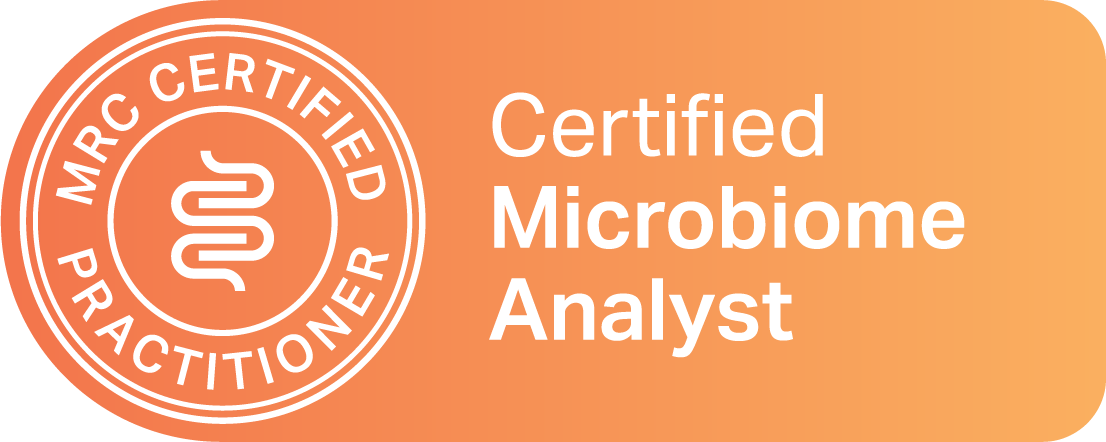
This course will give you in-depth, expert knowledge on microbiome manipulation. We’ll be looking at the key microbiome players in great detail and how to nourish or reduce these key genera.
In this course, we’ll delve deeply into microbiome testing options; look at the impact of common pharmaceuticals on the microbiome; discuss how endotoxemia drives chronic diseases and even aging itself; detail how the microbiome impacts mitochondrial function and how it impacts mood, and much, much more.
Advanced Microbiome Manipulation
As I’m sure you’re aware, research in the field of the gut microbiome has been going gangbusters over the past 2 decades. As someone who’s been an active researcher in this field over the past 25 years, I have seen firsthand the field grow from a small one, where a clinician could pretty easily read all the research published on the gut microbiota in the previous 12-month period – which was how things were in 1999 when I started my research projects in the area of gut dysbiosis and gastrointestinal health. We can contrast this to where we find ourselves today. It is no longer possible for a busy clinician to keep up-to-date with all of the research (or even the key research) coming out in this area each year. There were 300-400 papers published in this area in 1999 compared to 28,000+ in 2023!
A key consequence of this massive explosion in research over this time is that our understanding of the gut ecosystem and how it relates to health and disease has changed dramatically (as has awareness of the microbiome’s importance). Unfortunately, one of the negative consequences of this meteoric rise in research output is that I’ve observed clinicians getting further and further behind in gut-microbiome science. This falling-behind can manifest as poor selection of tests to assess microbiota health (i.e., using an inappropriate or only partially appropriate test to assess its composition) and a superficial interpretation of test results due to a lack of specialised or in-depth knowledge, as well as using dietary, herbal and supplementary interventions that are either ineffective to treat the microbiota derangement noted or even the unknowing choice of interventions that are harmful to the microbiota.
Sadly, I observe the above issues frequently in my clinical practice. In essence, I’ve frequently observed microbiota-harm (and/or patient harm) essentially due to a lack of upskilling and knowledge in this rapidly-evolving field. These are in fact the key reasons why I developed the Microbiome Restoration Center’s Advanced Microbiome Manipulation course, so that I could ensure clinicians are up-to-date in this vital area, ensuring they’re choosing the most appropriate and accurate tests, can interpret them correctly and deeply, and prescribe interventions from a philosophy of “the microbiome comes first”. I wanted to lift the standard so that we have a new generation of microbiome-literate clinicians who can provide patents with the expertise and care they need to heal and optimally thrive in an era where our gastrointestinal microbes are known to be vital contributors to our health.
We as clinicians need to become deeply-versed in the GI microbiome field, aware of, confident in, and competent using the most up-to-date microbiota assessment techniques, deeply understand their interpretation, and know how to use lifestyle, diet, supplements and herbal medicines to selectively modify and restore the microbiome. We need to become “microbiome clinicians”.
Meet your Trainer
This is your opportunity to learn directly from Dr Jason Hawrelak
Dr Hawrelak has a unique skillset – being a clinician, research scientist, and educator – who completed his PhD in the area of the gut microbiota and who has been working and practicing in this area for over 20 years. He has been described as an inspiring teacher and mentor with an unrivalled depth of knowledge in the field.

What our Graduates say
What we'll cover in this program
WEEK ONE
Module 1 – Bifidobacterium
Module 2 – Lactobacillus
Module 3 – Akkermansia
Module 4 – Faecalibacterium
Module 5 – Key Butyrate Producers
Module 6 – Escherichia
Module 7 – Streptococcus
Module 8 – Bacteroides
Module 9 – Alistipes
Module 10 – Prevotella
Module 11 – The Classic Hydrogen Sulphide Producers: Bilophila and Desulfovibrio
Module 12 – Fusobacterium
Module 13 – The Methane Producers
In week 1, we’ll take a deep dive into the microbiome, getting into the nitty-gritty details on the key microbiome players. We’ll explore the key beneficial genera, main commensals, and the common pathobionts. For the beneficial genera, we’ll learn strategies to increase their populations, for the commensals, how to optimise their populations, and for the pathobionts, techniques and tools we can use to decrease their populations.
WEEK TWO
Module 14 – In Depth Reviews of Different Microbiome Testing Options and Interpretation Walk Through.
This week we’ll delve into the testing approaches (and their technologies) that are available for clinicians to assess the health of the microbiome. We’ll look at the strengths and weaknesses of the different microbiota assessment techniques and the labs offering them. We’ll cover tests using culturing, 16s rRNA, PCR, and shotgun metagenomic technology. We’ll specifically detail the tests Dr Hawrelak uses in his clinical practice and walk through how he extracts and interprets the data from these different tests for his patients.
WEEK THREE
Module 15 – Medicines and the Microbiome
Module 16 – Enhancing Microbiota Polyphenol Transformations
Research over the past decade has clearly shown that antibiotics are not the only pharmaceutical agents that harm the GI microbiota. It is now known that a wide number of pharmaceutical agents negatively impact the composition of the microbiota. It is essential as clinicians to know which medications have this capacity, so we can know how to address this in our patients taking them. Module 16 will consider the ways in which we can enhance the conversion of polyphenols in our gastrointestinal tract so that we can receive greater benefit from their ingestion – keeping in mind that over 90% of ingested polyphenols reach the colon intact and that their microbiota conversion is generally essential for their beneficial actions.
WEEK FOUR
Module 17 – Endotoxemia – Addressing a Key Driver of Chronic Disease
Endotoxemia is a key driver of chronic disease that is seldom on the radar of healthcare practitioners. Research conducted over the past 15 years has begun to shed considerable light on the disease-causing capacity of bacterial endotoxins. In module 17, we’ll dive into endotoxemia, describing what endotoxins are, detail their origins in the GIT and discuss how they are key drivers in many different chronic diseases common in Western nations, including metabolic diseases, cardiovascular conditions, and neurological disorders. We’ll cover current ways of assessing our patients for endotoxemia and explore future testing possibilities. Lastly, we’ll detail the tools that practitioners can use to address endotoxemia, including dietary recommendations, specific probiotics, prebiotics, and herbal medicines that can effectively address their production and absorption in the GIT and enhance their clearance.
WEEK FIVE
Module 18 – The Mitochondrial-Microbiota Axis – Enhancing Mitochondrial Function
Healthy physiology of mitochondria is essential for human health, and their dysfunction is now considered a critical factor in a number of different conditions, such as type 2 diabetes, cancer, neurodegenerative, and cardiovascular diseases. The removal of damaged mitochondria (mitophagy) and the generation of new fully functional ones (mitochondrial biogenesis) are required to preserve both cellular and mitochondrial homeostasis. In module 18, we’ll cover the newly discovered mitochondria-microbiota axis and detail the ways in which the microbiota can alter the function of the body’s mitochondria. We’ll also highlight the tools and techniques we can use to enhance the mitochondria-microbiota axis to optimise mitochondrial function.
WEEK SIX
Module 19 – The Role of the Microbiota in Cognitive Decline & Alzheimer’s Disease
The important role of the microbiome-gut-brain axis in the pathogenesis of cognitive decline and Alzheimer’s disease is becoming increasingly clear. Module 19 delves into the drivers of the dysfunction in the microbiome-gut-brain axis that contributes to cognitive decline and covers how we can use microbiota optimisation as an additional strategy to both prevent and treat cognitive decline and Alzheimer’s disease.
WEEK SEVEN
Module 20 – The Microbiota and Mood Disorders – Depression & Anxiety
It has long been known that psychological stress could negatively impact the composition of the GIT microbiota. Research conducted over the past decade has shown, however, that alterations in the composition of the microbiota can actually change emotional behaviour and brain function. This bidirectional relationship is now being referred to as the Brain-Gut-Microbiota axis. In Module 20, we’ll be exploring in depth the mechanisms by which our microbes may modify our mood – specifically depression and anxiety. We’ll examine which intestinal microbes and their metabolites may be involved, as well as emphasise treatment strategies aimed at improving the dysbiosis and gut dysfunction that underlies discordance in the microbiota-mood axis. We’ll also highlight specific prebiotic and probiotic interventions that can modify the stress response, decrease systematic inflammation, and lift the spirits.
WEEK EIGHT
Module 21 – How to Harness the Microbiome for Enhancing Longevity and Healthy Aging
Module 22 – Metabolic Disease and the Microbiome
Aging and chronic disease are often linked. Yet, many age without developing them. Chronological age isn’t always biological age. In Module 21, we’ll explore the microbiota’s role in aging, its typical changes in Western aging, and strategies for preserving a youthful microbiota to delay biological aging.
Metabolic syndrome and type 2 diabetes rates have risen sharply. A large portion of the population now has these conditions. Recent research suggests a strong link between them and gut microbiota dysbiosis. In Module 22, we’ll review this research and discuss treatment approaches to improve metabolic disease outcomes.
WEEK NINE
Module 23 – The Role of Dysbiosis in Autistic Spectrum Disorders
Rates of autism spectrum disorders (ASD) have increased dramatically over the past 30 years. A growing body of evidence is suggesting a strong link between altered microbiota composition and ASD. Research has also found that changing the microbiome can significantly influence ASD presentations, such as mood, cognition, and GI symptoms. Module 23 covers the links between dysbiosis and ASD, highlights the most commonly seen dysbiotic patterns observed in ASD children (based upon the research and Dr Hawrelak’s clinical experience with this population), and delves into the tools that can be used to address these specific patterns.
WEEK TEN
Module 24 – Optimising the Microbiota to Enhance Cancer Outcomes
Module 25 – Common Microbiota Patterns and How to Address Them – Proteobacteria Blooms, Bacteroides Overgrowth, Prevotella Overgrowth
Over the past few years, a growing body of evidence is suggesting that treatment outcomes in cancer patients are influenced by the composition of their GI ecosystem. With some ecosystem compositions associated with poorer outcomes and other patterns associated with enhanced survival and better treatment tolerability. In Module 24, we’ll highlight the recent research findings in this area with a view of enabling clinicians to optimise their patients’ ecosystems before (and during) conventional cancer treatment as a complementary approach to improve treatment outcomes. Our final lesson, Module 25, will cover some common dysbiotic patterns and using cases from Dr Hawrelak’s practice, show how they can be successfully addressed.
The Advanced Microbiome Manipulation course is the most current, thorough, and clinically-relevant course of its kind - taught by a worldwide leader in the field (microbiome researcher, clinician, and over 20 years of teaching experience).
This course provides you with weekly pre-recorded lecture content (20+ hours over the term covering 29 different microbiome-related topic areas) that you can watch at your own pace each week, and dedicated weekly live Q and A sessions over Zoom to go deeper into the weekly topics, get your questions answered, cover case studies, and learn from the questions others in the course ask. This is a rare opportunity to learn directly from Dr Hawrelak, who will be leading the weekly live classes.
What you’ll get:
-
10 Week Live Online Program
-
Become a Certified Microbiome Analyst
-
Get listed on our website as a Certified Practitioner
-
Use of our badge on your website/promotional materials
-
Access to Video lectures and live recordings for 12 months
-
Copies of slides and handouts
-
Certificate of Graduation

Additional Bonuses
Live time with Dr Hawrelak ($4,900 value)
1-year Subscription to the Probiotic Advisor Database
Access to Exclusive Facebook Group dedicated to students
3 tried and tested treatment protocols direct from Dr Hawrelak’s practice:
- Bacteroides Overgrowth Protocol;
- Klebsiella and other pathogenic Proteobacteria Eradication Protocol;
- Prevotella Overgrowth Protocol.
Learn directly from Dr Jason Hawrelak, a true gut-health expert.
Frequently Asked Questions
When does the course start?
The term starts in October, 2025.
How long do I get access to the lecture content?
You get 12 months of access to the lectures. But lifelong access to the comprehensive lecture notes from the course.
When are the live classes scheduled?
The live classes are run over Zoom and occur weekly for 60-90 mins over the course of the 10-week term. Live classes will run at 10 am on Mondays (Australian Eastern Time).
The first class is on Monday, October 14th, to give you a week to review the content before the session. All live sessions will be recorded so that students who could not be present will still be able to watch them.
How often does this course run?
The course runs once per year only. And there are only a limited number of student places available.
How much-pre-recorded lecture content is there each week?
Each week will differ. The content is frequently updated. So I cannot be definitive here currently. It will vary from 1-5 hours each week. Likely averaging 1.5-2 hours per week.
Can I claim Continuing Professional Education hours(CPE) for the completion of the course?
Please check with your professional association in regard to their specific CPE requirements. Some health professionals in some countries will certainly be able to claim the CPE/CPD points for the completion of the course (e.g., naturopaths and nutritionists in Australia).
I'm keen - sign me up! How do I enroll in the course?
This course is only available for clinicians who have completed the prerequisite course – Naturopathic & Functional Medicine Approaches to Gastrointestinal Disorders. If you have completed this course and are keen to enroll in the Advanced Microbiome Manipulation course, reach out to Helene (helene@probioticadvisor.com) and she’ll be able to help you get enrolled.








